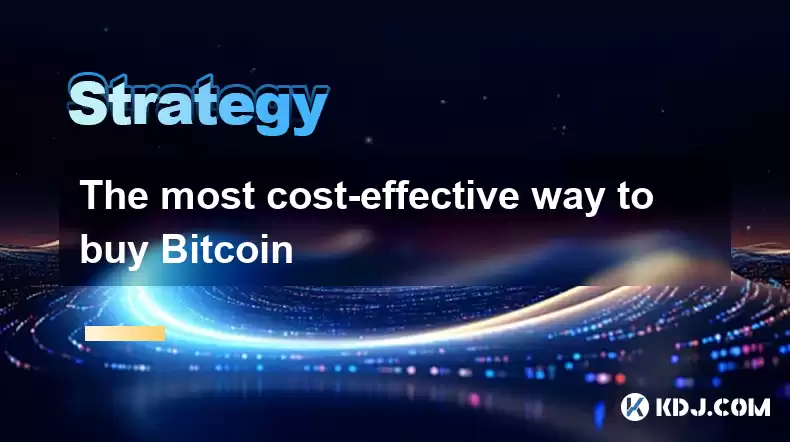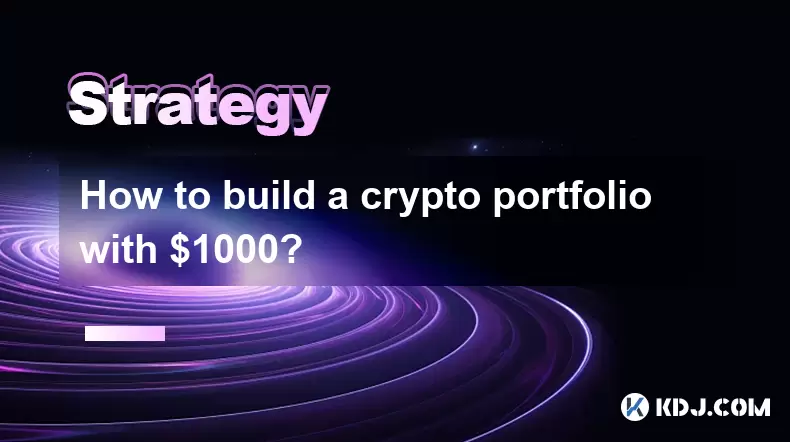-
 Bitcoin
Bitcoin $117500
2.15% -
 Ethereum
Ethereum $3911
6.19% -
 XRP
XRP $3.316
10.79% -
 Tether USDt
Tether USDt $1.000
0.01% -
 BNB
BNB $787.2
2.24% -
 Solana
Solana $175.2
4.15% -
 USDC
USDC $0.9999
0.00% -
 Dogecoin
Dogecoin $0.2225
8.40% -
 TRON
TRON $0.3383
0.28% -
 Cardano
Cardano $0.7868
6.02% -
 Stellar
Stellar $0.4382
9.34% -
 Hyperliquid
Hyperliquid $40.92
7.56% -
 Sui
Sui $3.764
7.63% -
 Chainlink
Chainlink $18.48
10.66% -
 Bitcoin Cash
Bitcoin Cash $582.1
1.88% -
 Hedera
Hedera $0.2601
6.30% -
 Avalanche
Avalanche $23.33
4.94% -
 Ethena USDe
Ethena USDe $1.001
0.02% -
 Litecoin
Litecoin $122.3
2.04% -
 UNUS SED LEO
UNUS SED LEO $8.969
-0.27% -
 Toncoin
Toncoin $3.339
0.86% -
 Shiba Inu
Shiba Inu $0.00001287
4.30% -
 Uniswap
Uniswap $10.43
7.38% -
 Polkadot
Polkadot $3.861
5.08% -
 Dai
Dai $1.000
0.02% -
 Bitget Token
Bitget Token $4.513
3.41% -
 Monero
Monero $267.7
-6.18% -
 Cronos
Cronos $0.1499
4.14% -
 Pepe
Pepe $0.00001110
5.15% -
 Aave
Aave $284.9
8.28%
The most cost-effective way to buy Bitcoin
Buying Bitcoin involves various costs like trading fees, network fees, and more; understanding and minimizing these costs is key to maximizing your investment.
Apr 01, 2025 at 10:01 pm

Understanding the Costs Involved
Buying Bitcoin, like any other asset, involves various costs. These costs can significantly impact your overall investment. Understanding these costs is crucial to finding the most cost-effective method. Key cost factors include trading fees, network fees (gas fees), deposit/withdrawal fees, and the spread (the difference between the buy and sell price). Minimizing these costs is key to maximizing your Bitcoin holdings. Different platforms and methods have different fee structures, so careful comparison is necessary.
Direct Purchases from Exchanges
Exchanges are the most common way to buy Bitcoin. They offer a wide range of cryptocurrencies and generally have user-friendly interfaces. However, fees vary considerably. Some exchanges charge a percentage of the transaction value, while others might have flat fees or tiered fee structures based on trading volume. It's essential to compare fees across multiple exchanges before choosing one. Always check the fee schedule before making a purchase.
Peer-to-Peer (P2P) Trading Platforms
P2P platforms connect buyers and sellers directly. This can sometimes lead to lower fees than centralized exchanges, as you're cutting out the middleman. However, P2P trading involves more risk. You need to be cautious about scams and ensure you're dealing with reputable sellers. Thoroughly vet potential sellers before engaging in any transaction. Verify their reputation and check for reviews.
Using Bitcoin ATMs
Bitcoin ATMs offer a convenient way to buy Bitcoin with cash. However, they usually charge significantly higher fees than online exchanges or P2P platforms. The fees can be a substantial percentage of the transaction, making them less cost-effective for larger purchases. Consider the high fees before using a Bitcoin ATM, especially for larger amounts. They are best suited for small, occasional purchases.
Dollar-Cost Averaging (DCA)
Dollar-cost averaging is a strategy that involves investing a fixed amount of money at regular intervals, regardless of the price. This helps mitigate the risk of buying high and reduces the impact of price volatility. While not directly reducing fees, DCA can indirectly improve cost-effectiveness by smoothing out price fluctuations. DCA can be a smart strategy, especially for long-term investors. It minimizes emotional decision-making.
Choosing the Right Exchange: A Step-by-Step Guide
Choosing the right exchange is crucial for minimizing costs. Here's a step-by-step guide:
- Research different exchanges: Compare fees, security measures, available cryptocurrencies, and user reviews.
- Check the fee structure: Look for transparent fee schedules and understand any hidden costs.
- Assess security features: Choose an exchange with robust security protocols, including two-factor authentication (2FA).
- Read user reviews: See what other users have to say about their experiences with the exchange.
- Consider the exchange's reputation: Opt for established exchanges with a good track record.
Minimizing Transaction Fees
Transaction fees are a significant part of the cost of buying Bitcoin. Here are some tips to minimize them:
- Choose the right time to trade: Network congestion can lead to higher transaction fees. Try to trade during off-peak hours.
- Batch your transactions: Combining multiple smaller transactions into one larger transaction can sometimes reduce the overall fee.
- Use a reputable exchange with low fees: Some exchanges consistently offer lower fees than others.
- Negotiate fees with P2P sellers: In P2P transactions, you might be able to negotiate the fees with the seller.
Security Considerations
While focusing on cost-effectiveness, remember that security is paramount. Never compromise security for lower fees. Always use reputable exchanges and platforms with strong security measures. Prioritize security; it's more valuable than saving a few dollars on fees. Employ strong passwords and enable 2FA.
Understanding Network Fees (Gas Fees)
Network fees, often called "gas fees" on Ethereum and other networks, are separate from exchange fees. These fees are paid to miners to process transactions on the blockchain. The cost of these fees varies depending on network congestion. Monitor network congestion to minimize gas fees.
Long-Term vs. Short-Term Strategies
Your approach to buying Bitcoin should align with your investment goals. Long-term investors might benefit more from DCA, while short-term traders may prioritize speed and potentially accept higher fees for faster transactions. Consider your investment timeline when choosing your buying method.
Frequently Asked Questions
Q: What is the cheapest way to buy Bitcoin?
A: There's no single "cheapest" way. The most cost-effective method depends on factors like the amount you're buying, your risk tolerance, and your technical skills. Exchanges with low fees, or P2P trading with careful vetting, are generally better than Bitcoin ATMs.
Q: Are there any hidden fees when buying Bitcoin?
A: Yes, always check for hidden fees. Some exchanges might charge additional fees for deposits, withdrawals, or specific payment methods. Read the terms and conditions carefully.
Q: How can I avoid scams when buying Bitcoin?
A: Only use reputable exchanges and P2P platforms. Verify seller reputations, avoid deals that seem too good to be true, and never share your private keys.
Q: What is the difference between exchange fees and network fees?
A: Exchange fees are charged by the platform for facilitating the transaction, while network fees are paid to miners to process the transaction on the blockchain.
Q: Is Dollar-Cost Averaging always the best strategy?
A: DCA reduces risk but doesn't guarantee the lowest overall cost. It's a good strategy for long-term investors, but short-term traders might have different priorities.
Q: How do I choose a secure exchange?
A: Look for exchanges with robust security features like two-factor authentication (2FA), cold storage for user funds, and a proven track record of security. Read reviews and check for any past security breaches.
Disclaimer:info@kdj.com
The information provided is not trading advice. kdj.com does not assume any responsibility for any investments made based on the information provided in this article. Cryptocurrencies are highly volatile and it is highly recommended that you invest with caution after thorough research!
If you believe that the content used on this website infringes your copyright, please contact us immediately (info@kdj.com) and we will delete it promptly.
- Tron's Sell-Off Spurs Altcoin Shift: What's Next for TRX?
- 2025-08-08 08:30:12
- RUVI Presale: Is the Growth Potential Real?
- 2025-08-08 09:10:12
- Sleep Token's US Takeover: Thornhill Rides the 'Even In Arcadia' Wave
- 2025-08-08 08:30:12
- FTT Token's Wild Ride: Creditor Repayments vs. Market Drop - A New Yorker's Take
- 2025-08-08 07:10:12
- Floki Crypto Price Prediction: Riding the Robinhood Rocket or Just a Meme?
- 2025-08-08 07:15:12
- EigenLayer, Restaking, and Ethereum: Navigating the Hype and the Hazards
- 2025-08-08 06:30:12
Related knowledge

How to avoid common crypto investment mistakes?
Jul 13,2025 at 01:35am
Understanding the Risks of Crypto InvestmentInvesting in cryptocurrency can be highly rewarding, but it also comes with significant risks. One of the ...

What is a long-short crypto strategy?
Jul 15,2025 at 10:56am
Understanding the Basics of a Long-Short Crypto StrategyA long-short crypto strategy is an investment approach where traders simultaneously take long ...

What is a long-short crypto strategy?
Jul 11,2025 at 01:28pm
Understanding the Basics of Long-Short Crypto StrategyA long-short crypto strategy is an investment approach where traders take both long and short po...

How to use the RSI indicator for crypto?
Jul 12,2025 at 03:56pm
Understanding the RSI Indicator in Cryptocurrency TradingThe Relative Strength Index (RSI) is a momentum oscillator used to measure the speed and chan...

Is copy trading a good strategy for crypto beginners?
Jul 12,2025 at 08:28am
Understanding Copy Trading in the Cryptocurrency MarketCopy trading is a strategy where novice traders replicate the trades of experienced investors a...

How to build a crypto portfolio with $1000?
Jul 13,2025 at 08:14pm
Understanding the Basics of Cryptocurrency InvestmentBuilding a crypto portfolio with $1000 starts with understanding the fundamentals of cryptocurren...

How to avoid common crypto investment mistakes?
Jul 13,2025 at 01:35am
Understanding the Risks of Crypto InvestmentInvesting in cryptocurrency can be highly rewarding, but it also comes with significant risks. One of the ...

What is a long-short crypto strategy?
Jul 15,2025 at 10:56am
Understanding the Basics of a Long-Short Crypto StrategyA long-short crypto strategy is an investment approach where traders simultaneously take long ...

What is a long-short crypto strategy?
Jul 11,2025 at 01:28pm
Understanding the Basics of Long-Short Crypto StrategyA long-short crypto strategy is an investment approach where traders take both long and short po...

How to use the RSI indicator for crypto?
Jul 12,2025 at 03:56pm
Understanding the RSI Indicator in Cryptocurrency TradingThe Relative Strength Index (RSI) is a momentum oscillator used to measure the speed and chan...

Is copy trading a good strategy for crypto beginners?
Jul 12,2025 at 08:28am
Understanding Copy Trading in the Cryptocurrency MarketCopy trading is a strategy where novice traders replicate the trades of experienced investors a...

How to build a crypto portfolio with $1000?
Jul 13,2025 at 08:14pm
Understanding the Basics of Cryptocurrency InvestmentBuilding a crypto portfolio with $1000 starts with understanding the fundamentals of cryptocurren...
See all articles

























































































